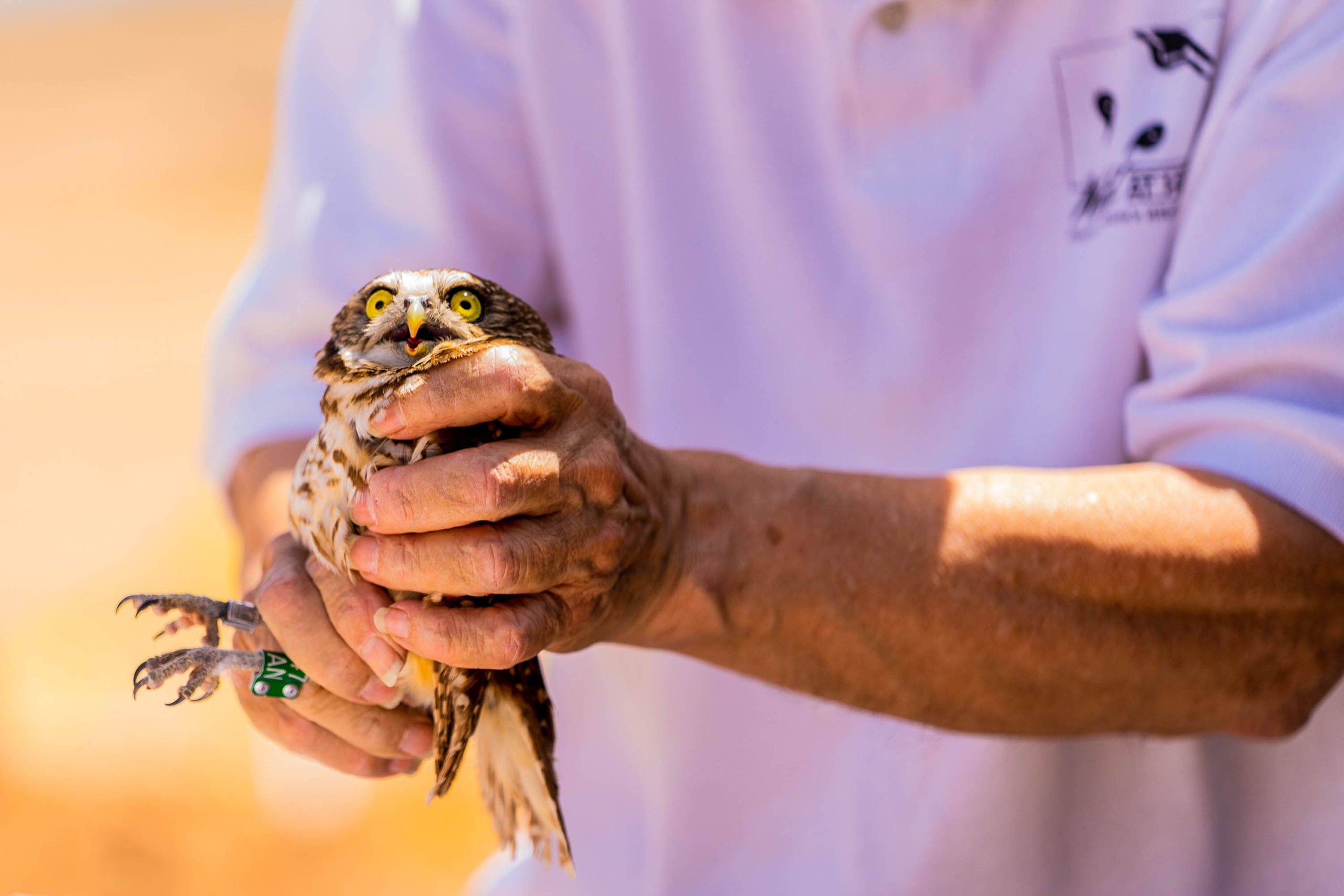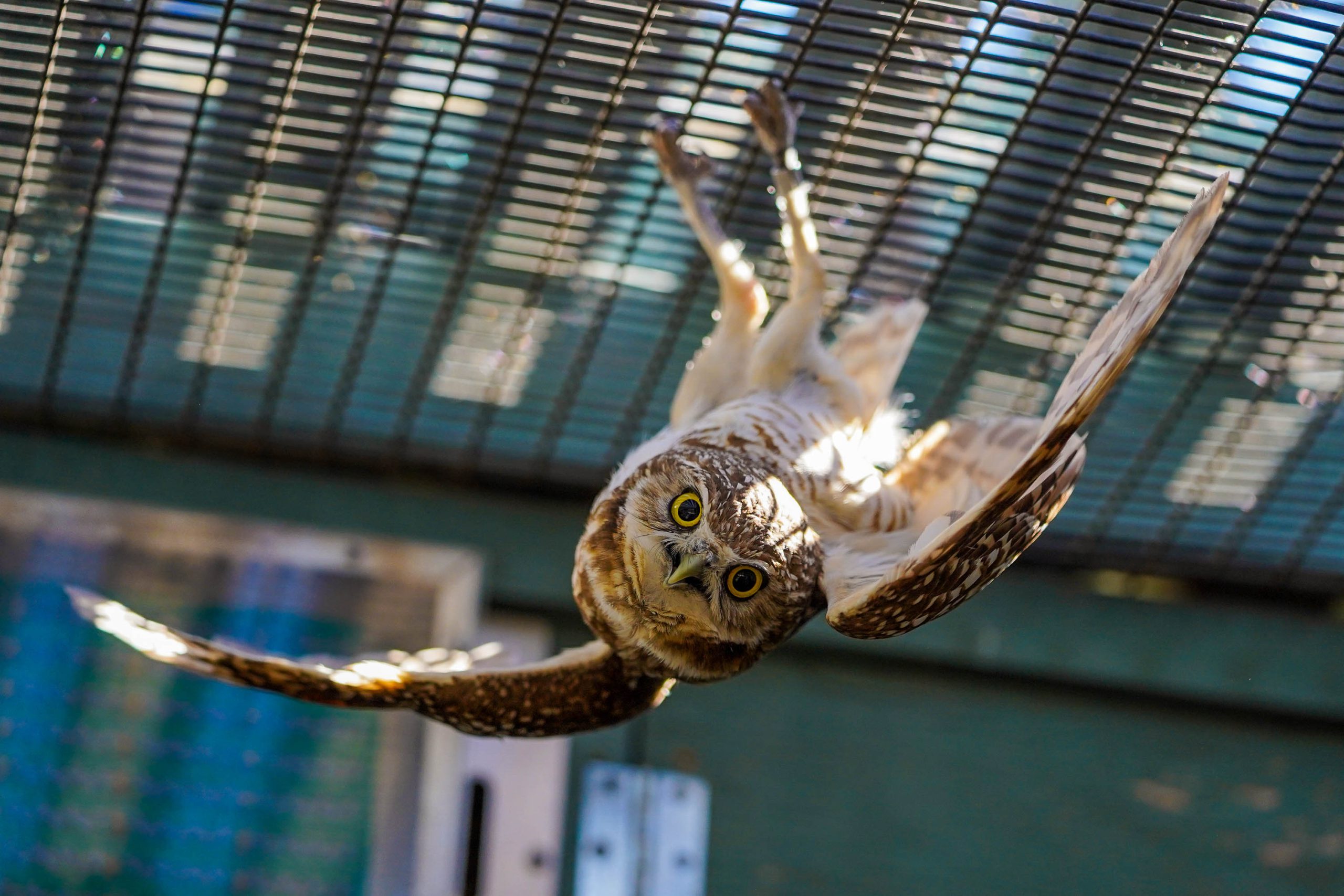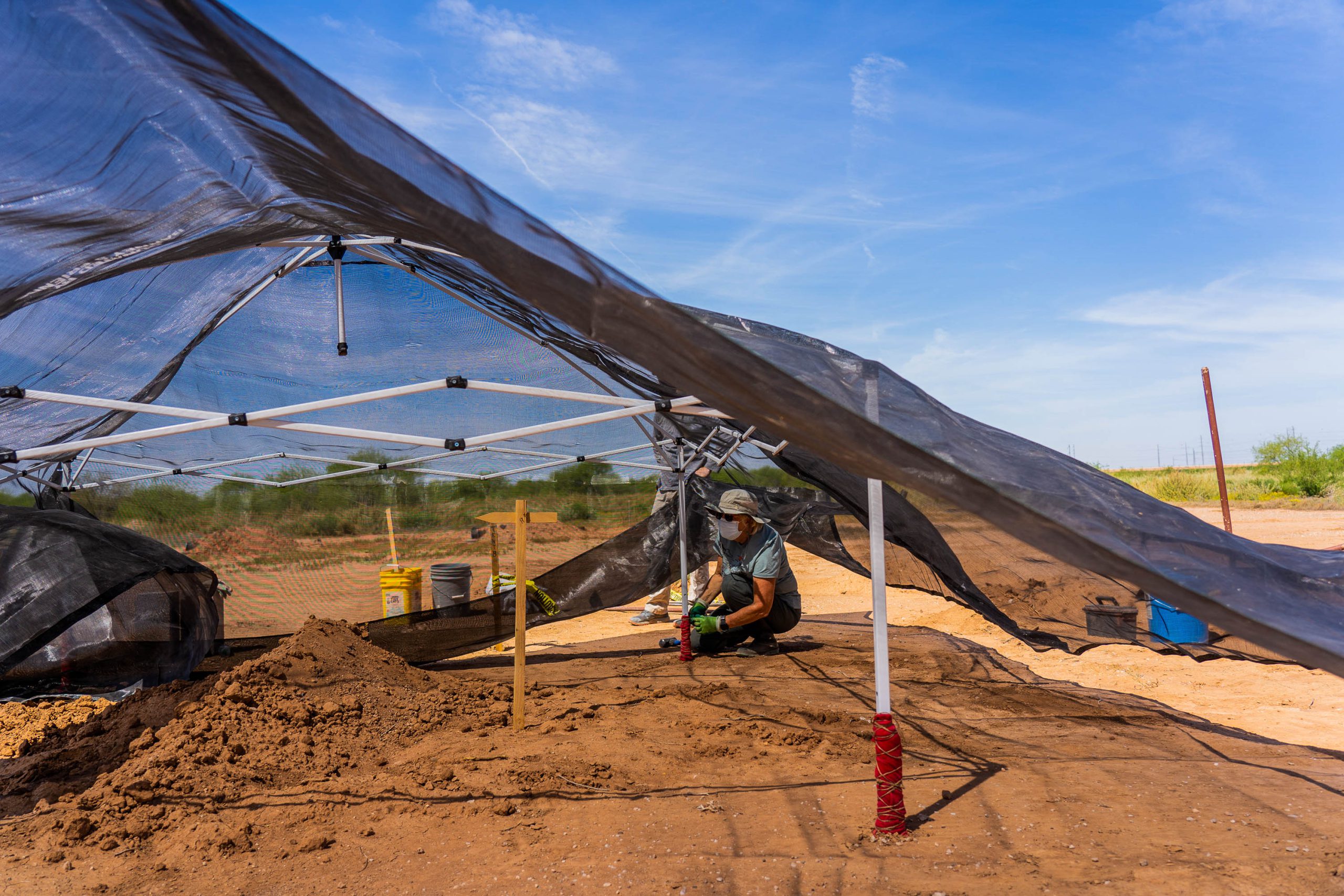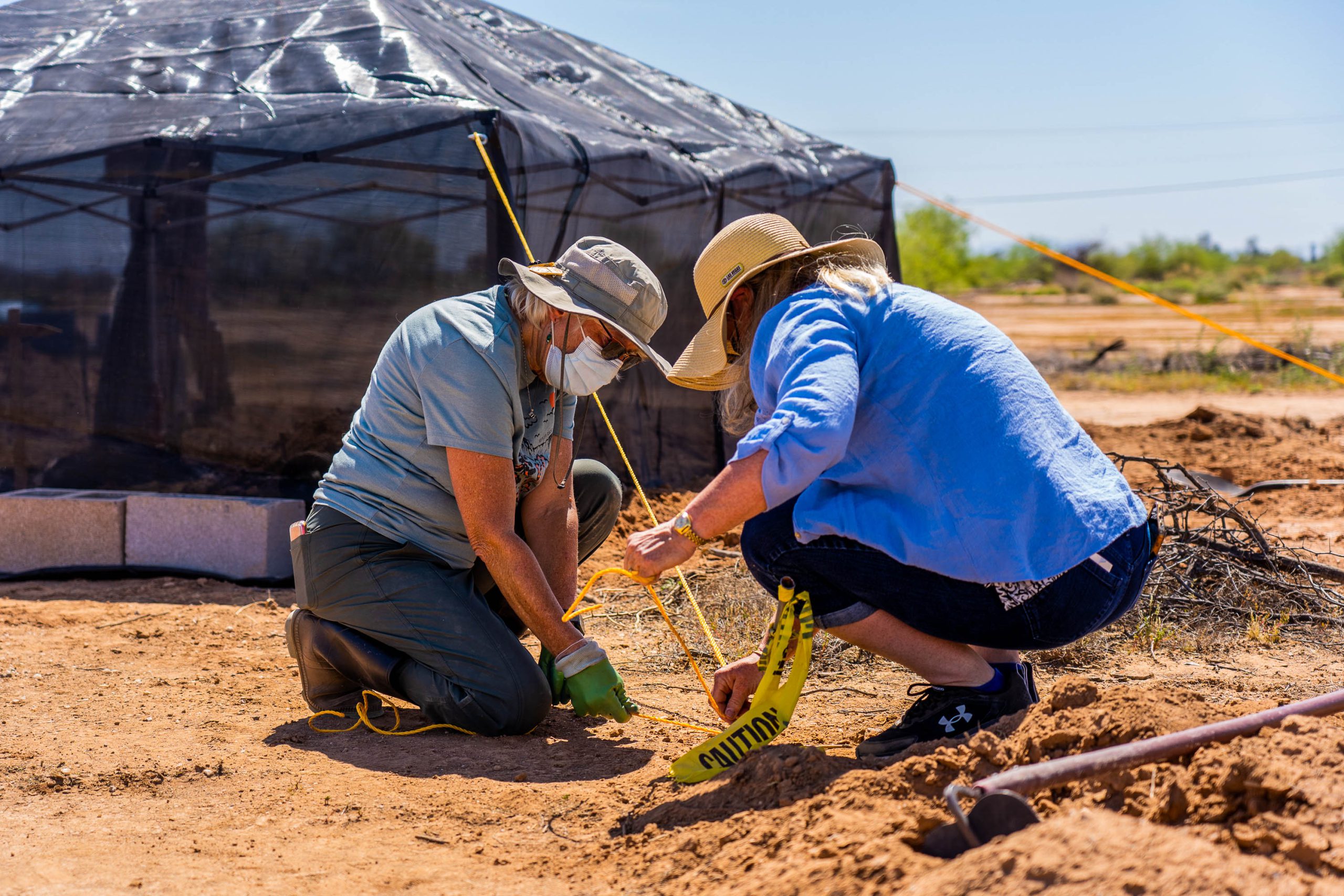Indianz.Com > News > Cronkite News: Experts work to protect burrowing owls amid constant threats
Burrowing owls’ habitat losses have wildlife experts working to relocate them
Tuesday, May 10, 2022
Cronkite News
FLORENCE, Arizona — Greg Clark gingerly handles a pair of cardboard carriers – each containing two small owls – as he joins a knot of sweating volunteers hammering stakes into the soil and shoveling dirt to seal the bottom of a big tent made of black netting.
Clark, the burrowing owl habitat coordinator for the raptor conservation group Wild at Heart, and the volunteers worked to assemble temporary housing for 20 burrowing owls that were being relocated from Buckeye and other sites in the West Valley. The owls, which are listed as a species of concern in Arizona, were driven from their habitat by development. Their new homes near Florence are in an empty lot beside a swath of farmland.
“Every day, there is some construction for new houses, a shopping center or a warehouse somewhere in Phoenix, Pinal County or greater Maricopa County,” Clark said.
As more open desert and farmland is developed, burrowing owls are being relocated to new sites through the collaboration of Wild at Heart, environmental organizations and volunteers.
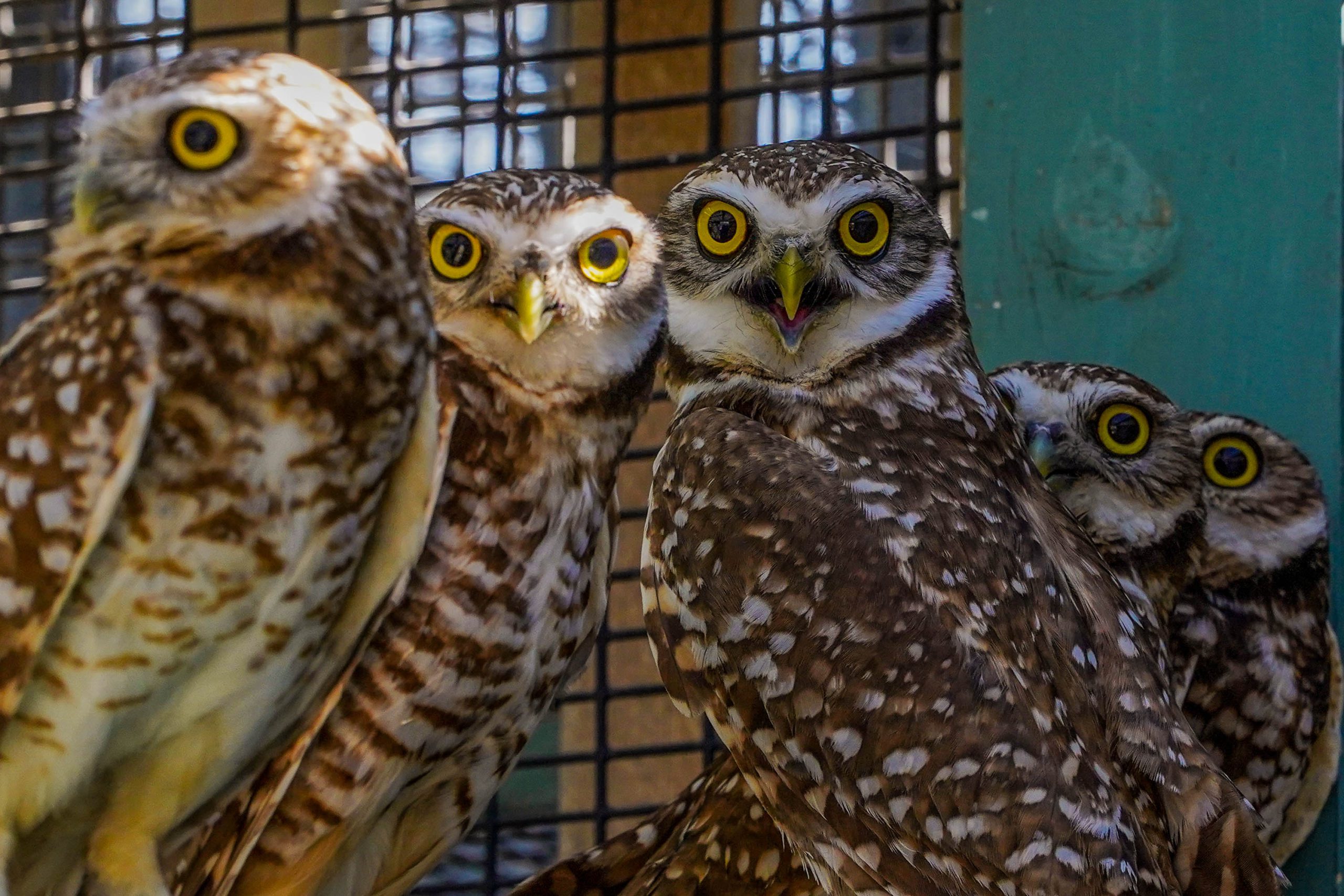
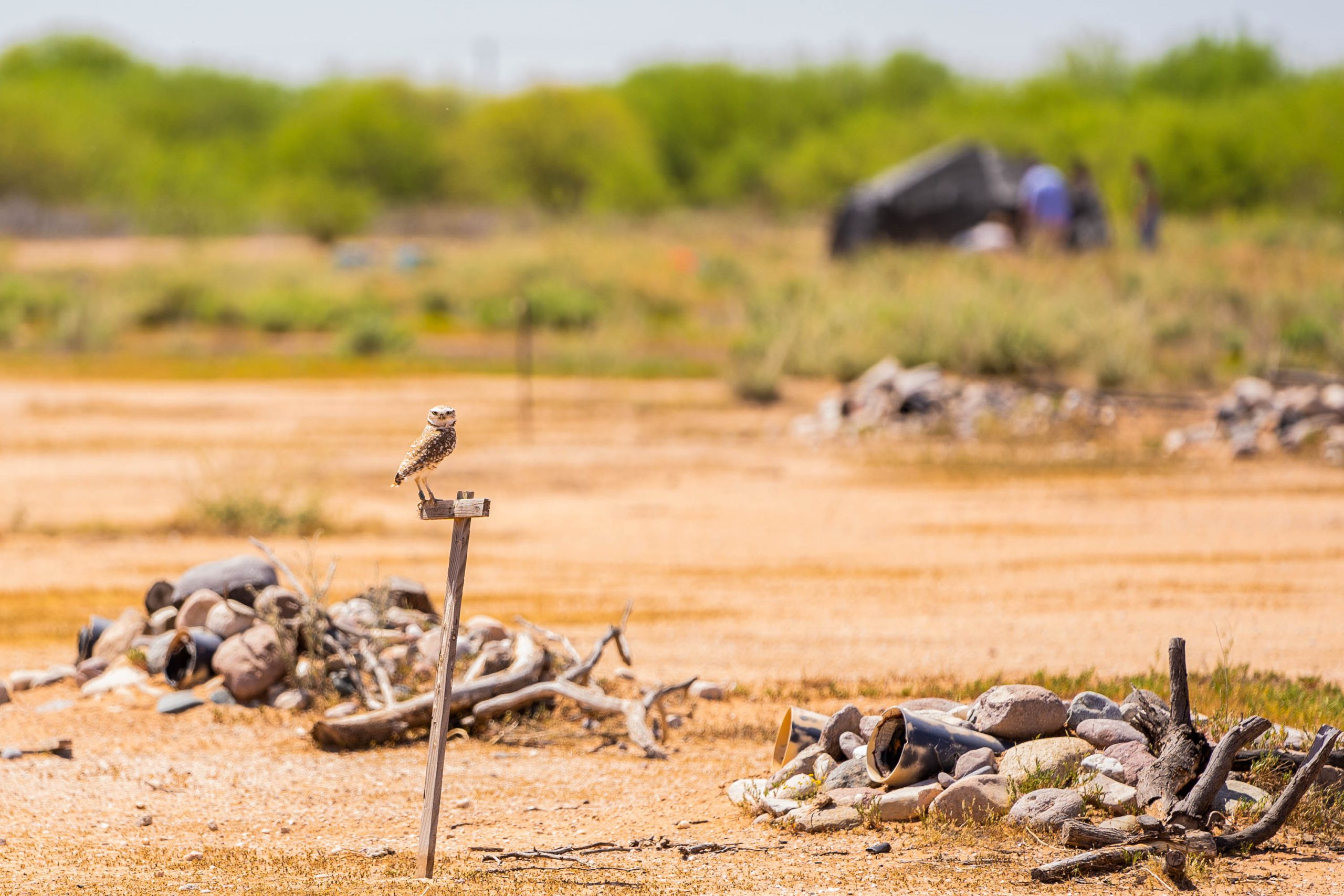
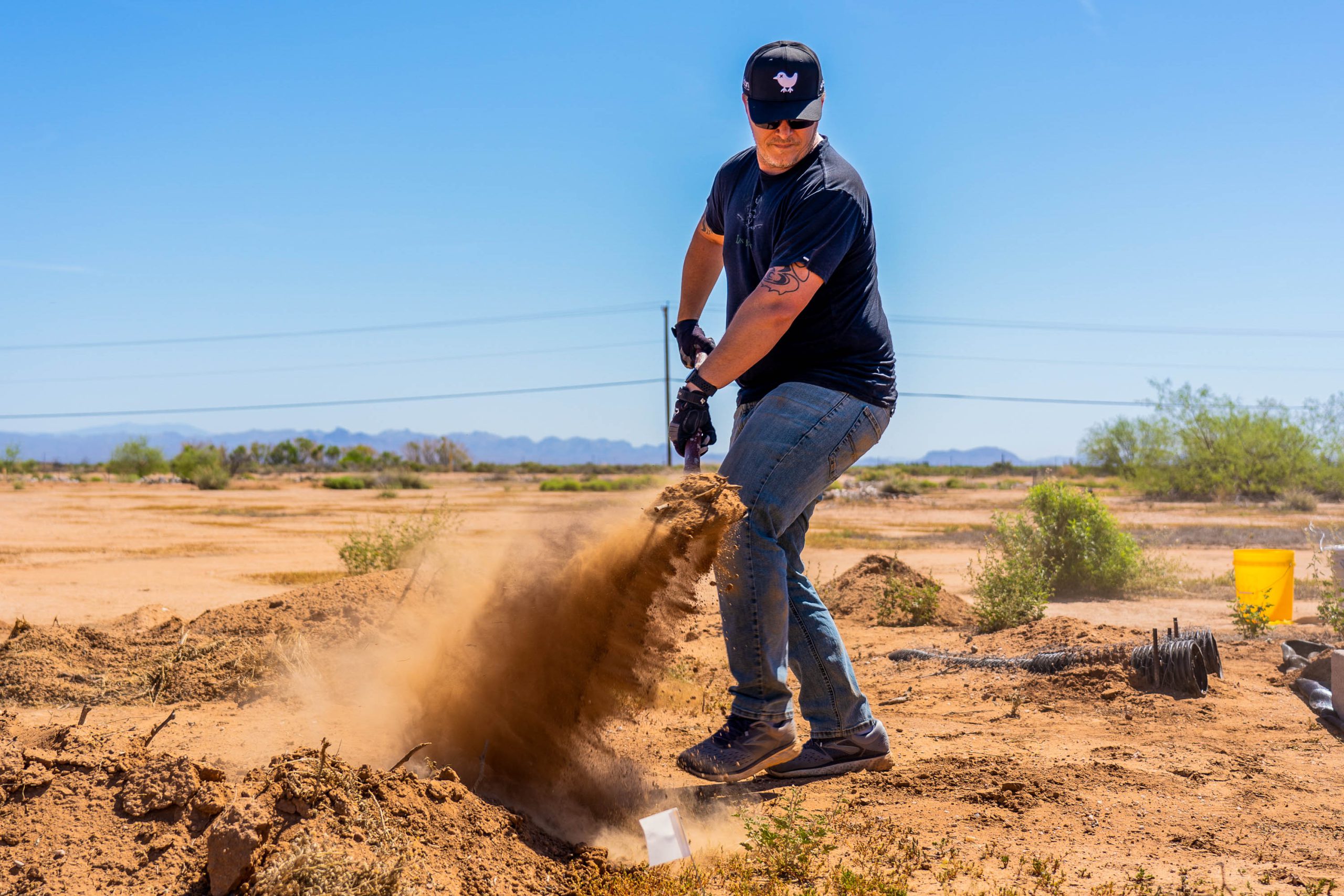
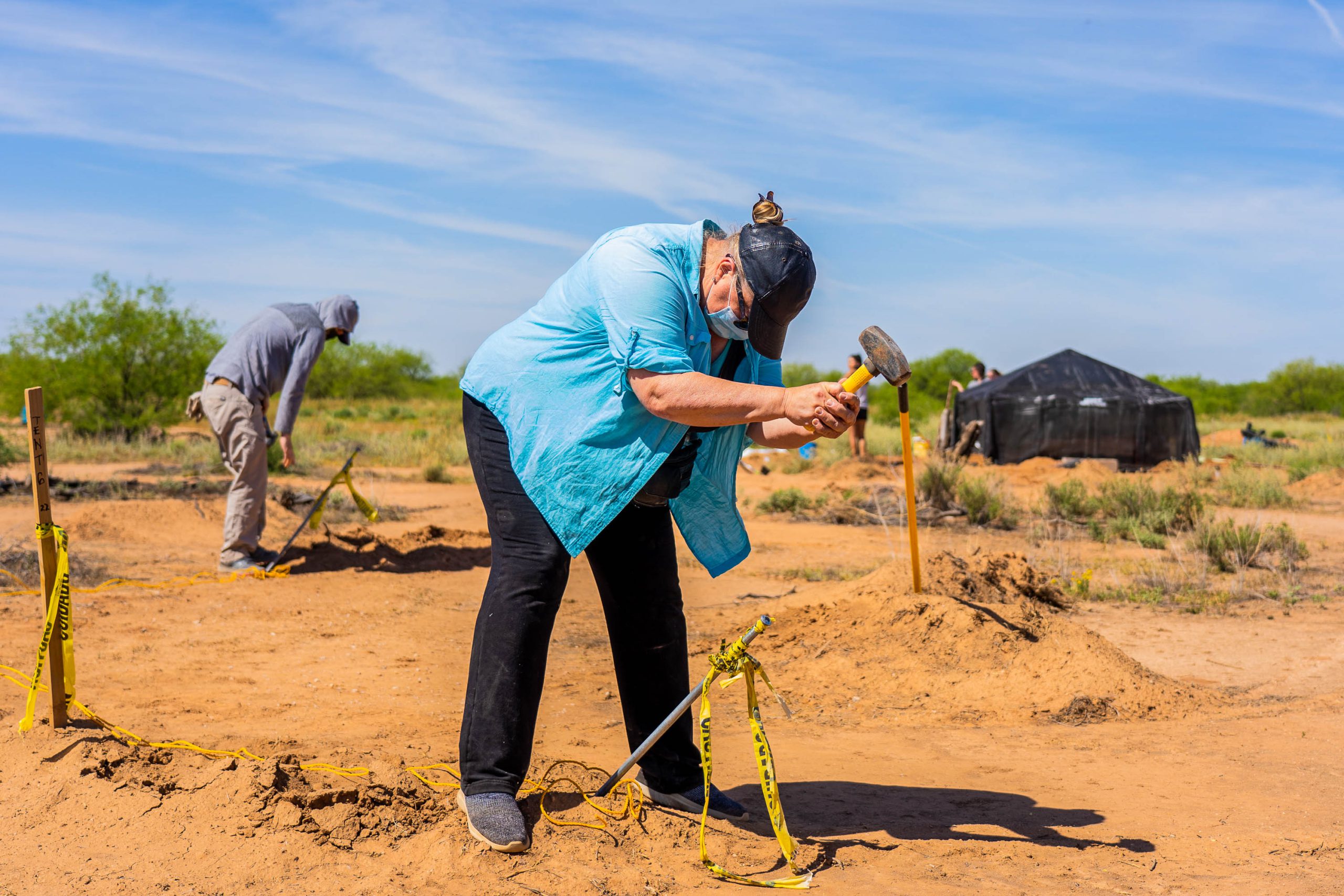
“They’re really starving for habitat,” he said. “So if we can create viable artificial burrow systems for them and a good habitat, it increases the likelihood that they will survive and thrive.” As construction continues across much of the state, Wise said, there is an increased need to relocate burrowing owls in areas outside the Phoenix area. “It seems like we’re sort of running out of places now,” she said. “There are still birds that need to be relocated, and as there’s projects going further and further west, we’re seeing it’s kind of like a boom or bust.”
Note: This story originally appeared on Cronkite News. It is published via a Creative Commons license. Cronkite News is produced by the Walter Cronkite School of Journalism and Mass Communication at Arizona State University.
Search
Filed Under
Tags
More Headlines
Native America Calling: The State of Indian Nations in 2025
Ernie Stevens: Protecting tribal sovereignty in a new political era
Rhonda LeValdo and Gaylene Crouser: Not In Our Honor
AUDIO: Legislative Hearing on H.R.410, H.R.412, H.R.504 & H.R. 741
Native America Calling: Native in the Spotlight with Tatanka Means
VIDEO: ‘Thank you for your leadership’: Sen. Lisa Murkowski (R-Alaska) to Sen. Brian Schatz (D-Hawaii)
VIDEO: Senate Committee on Indian Affairs Organizational Business Meeting
Alaska Beacon: Trump administration faces lawsuit over tribal gaming facility
Native America Calling: Medicaid’s next chapter in Indian Country
H.R.43, the Alaska Native Village Municipal Lands Restoration Act
H.R.42, the Alaska Native Settlement Trust Eligibility Act
H.R.226, the Eastern Band of Cherokee Historic Lands Reacquisition Act
House Subcommittee on Indian and Insular Affairs holds first hearing
Native America Calling: Rising home insurance rates put more Native Americans at risk
Citizen of Navajo Nation tapped for Indian Affairs post
More Headlines
Ernie Stevens: Protecting tribal sovereignty in a new political era
Rhonda LeValdo and Gaylene Crouser: Not In Our Honor
AUDIO: Legislative Hearing on H.R.410, H.R.412, H.R.504 & H.R. 741
Native America Calling: Native in the Spotlight with Tatanka Means
VIDEO: ‘Thank you for your leadership’: Sen. Lisa Murkowski (R-Alaska) to Sen. Brian Schatz (D-Hawaii)
VIDEO: Senate Committee on Indian Affairs Organizational Business Meeting
Alaska Beacon: Trump administration faces lawsuit over tribal gaming facility
Native America Calling: Medicaid’s next chapter in Indian Country
H.R.43, the Alaska Native Village Municipal Lands Restoration Act
H.R.42, the Alaska Native Settlement Trust Eligibility Act
H.R.226, the Eastern Band of Cherokee Historic Lands Reacquisition Act
House Subcommittee on Indian and Insular Affairs holds first hearing
Native America Calling: Rising home insurance rates put more Native Americans at risk
Citizen of Navajo Nation tapped for Indian Affairs post
More Headlines
